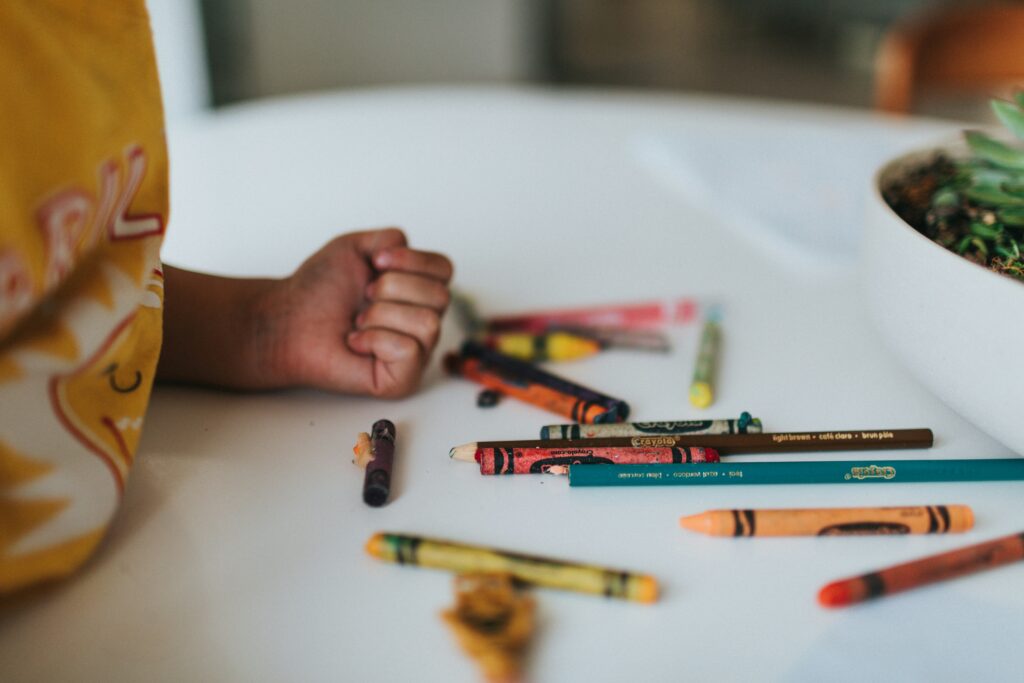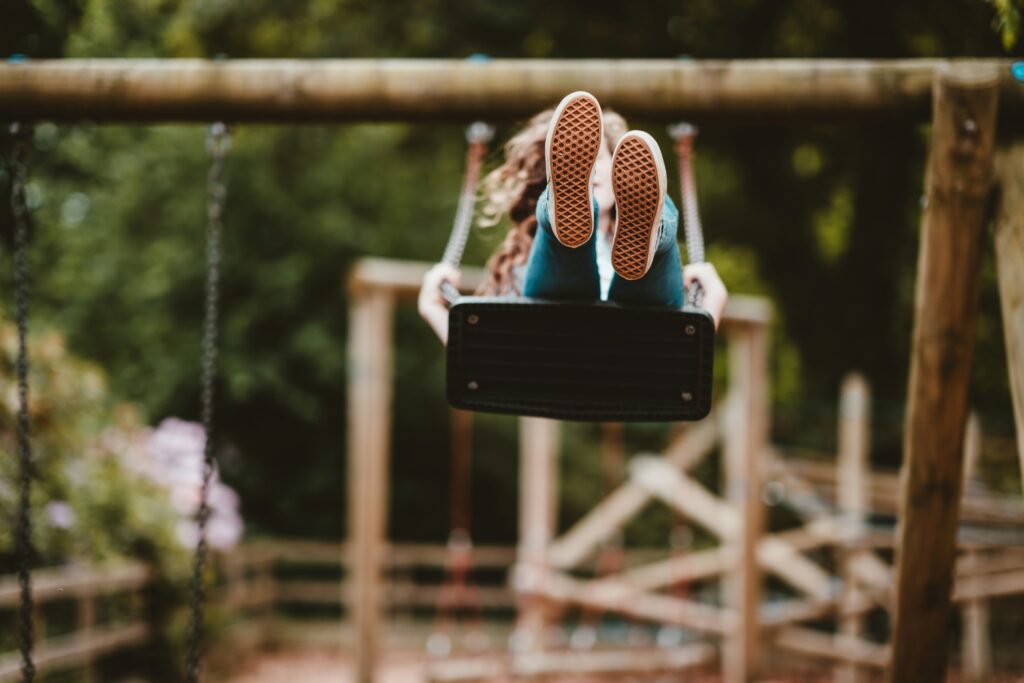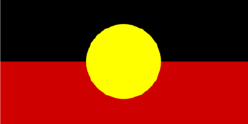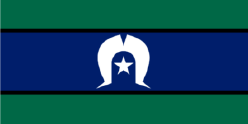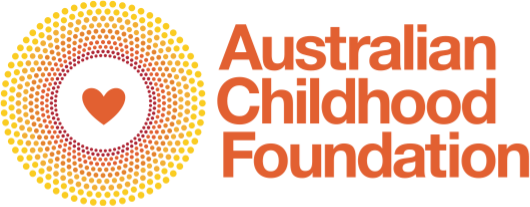National Centre-funded research project, Survivor perspectives on institutional use of child sexual abuse material, led by Campbell Wilson from Monash University’s AiLECS Lab, explores the attitudes and knowledge of victims and survivors of crimes involving child sexual abuse material*, and recommends how these can be embedded by institutions that use these materials.
To acknowledge Safer Internet Day 2025, we interviewed one of the researchers on this project, Kelly (Kel) Humphries.
Kel is a victim survivor of child sexual abuse as well as an author, speaker, advocate, coach and a Research Fellow with the AiLECS Lab (Artificial Intelligence for Law Enforcement and Community Safety) at Monash University. Kel is an expert in child protection and trauma informed approaches, bringing a multi-disciplinary focus to provide perspective, rigour and objectivity for her work on Survivor perspectives on institutional use of child sexual abuse material.
Kel has over 16 years of First Response Policing, and this, coupled with her lived experience, has enabled a very rare insight into the needs of victims and survivors throughout the investigative process. This insight has led her to speak at various conferences and work alongside Bravehearts, the Daniel Morcombe Foundation and the Australian Federal Police-led Australian Centre to Counter Child Exploitation (ACCCE). She regularly shares at the QPS Police Academy in the Sexual Crimes training, and advocates and shares through her podcast, Off the Cuff with Kel- A Podcast for Survivors and those who support them.
*Child sexual abuse material (CSAM) refers to material that depicts or describes a child, or a person who appears or is implied to be a child, engaged in real or simulated sexual activities, or any representation of their sexual parts.
Your research is titled ‘Survivor perspectives on institutional use of child sexual abuse material’. What is institutional use of child sexual abuse material (CSAM)?
Institutional use of child sexual abuse material (CSAM) in the context of our research is about authorised use of material by organisations, such as police and law enforcement bodies. This may mean in the context of legal use, so courts and prosecutory processes and broader crime prevention efforts, which might include the way law enforcement bodies use CSAM to locate perpetrators online, for example. We’re talking about research institutions which utilise CSAM to create algorithms to triage, classify and detect material online to aid or notify law enforcement through reporting pathways. Our research is about how victims and survivors of this type of abuse perceive the sanctioned use of CSAM.
What are some of the risks associated with current institutional practices involving CSAM?
So, you’ve got organisations and the way that they use material, and then you’ve got victims and survivors and the way they perceive the risks of those organisations, utilising that material. And those are two very, very different things. There is a piece in the middle missing which centres around communication, transparency and understanding.
In Australia, there is no central governing body that strictly oversees how CSAM is managed and used within sanctioned or approved contexts. As a result, many victims and survivors struggle with uncertainty and concern due to a widespread lack of clear information about these processes. This lack of transparency leads to misunderstandings and assumptions about how such material is handled, particularly when different jurisdictions enforce varying protocols.
While law enforcement and approved organisations follow strict guidelines to prevent misuse, no system can guarantee absolute protection against human error or misconduct. In any society, there is always a risk that someone may act inappropriately, and this reality fuels concerns among survivors.
Organisations that are legally permitted to handle CSAM in Australia have safeguards in place to ensure its security, but without clear and accessible explanations of these measures, victims and survivors may feel anxious about potential misuse. Their concerns are not necessarily about a lack of effort to safeguard the material but rather about the unknowns surrounding these processes, which create room for fear and uncertainty.
Why are victims and survivors’ perspectives on institutional use of CSAM so important?
Victims and survivors have never really been asked what they think about the way CSAM is used. Their perspective gives us a lens in which to view things from the victims’ and survivor’s perspective and the way that those who have an experience of CSAM might feel about its use.
And so, it informs the way we do things in a much more trauma-sensitive manner, which is more respectful to the victim survivor and their experiences. It means we reduce the impact of retraumatisation if we understand what these voices are telling us.
Having the victim survivor’s perspective tells us ways in which we can bridge the gap between the survivor’s voice and help victims and survivors to feel more safe, more engaged, more connected and more trusting of organisations. This way, when they do engage with systems and processes, they feel more comfortable to share their experiences.
That image, that video, that film is a crime scene of what’s happened to that victim survivor at that period in time. It is evidence. For victims and survivors, this is an experience, a horrific moment in time that never stops being permanent. It is online.
Due to the historical weight of these crimes, past practices and a lack of transparency, many victims and survivors of child sexual abuse are hesitant to engage with organisations involved in addressing these issues. Their reluctance is rooted in previous experiences where systems and processes failed to recognise the profound impact of their trauma. Many have been let down or retraumatised by institutions that did not adequately acknowledge their experiences or provide the necessary support. This history of systemic failure has led to deep mistrust, making it difficult for victims and survivors to feel safe or understood within these frameworks.
These voices and this work set a precedent not just for victims and survivors of CSAM, but the way victims of crime generally engage with organisations who are perceived as being in a position of trust, authority and power. It speaks of historical harm and a perception of safety and trust – something that can now only be changed with organisations taking accountability for those failures and being willing to stand in the gap and respond to these voices with change that is meaningful to victims and survivors. This includes accountability and transparency, humanising processes, and giving victims and survivors the opportunity to have agency and choice within the way material is used, and more broadly, throughout all engagement with institutions. What we are talking about really is systemic repair – addressing these gaps moving forward demonstrates to victims and survivors that they are heard. This is reflected through changes to policy, practice and processes.
We don’t have an accurate picture of what’s going on out there without the courage of these victims and survivors. So, it is critical that victims’ and survivors’ voices are heard so we know how to respond.
Can you share any emerging insights into survivors’ perspectives on the use of this material?
We have to remember that all victims and survivors of child sexual abuse, have had their rights, their autonomy, their choice taken from them during the acts of abuse that constitute their experiences. Now, when it comes to making a report to police or engaging with institutions, when victims and survivors take that step, they often no longer feel like they have control over what happens to their material or control over what happens in the process of making a report or engaging with institutions in relation to that material.
There are a lot of unknowns, and without transparency in that process, trauma and its many faces emerge. This requires adaptive, transparent, considered responses from organisations. This includes opportunities for autonomy and choice, transparency about how material is used, handled and stored by institutions as well as clarity on who reviews and has access to that material. It also requires accountability, consistency, interoperability and specialised support which understands the complexities faced by CSAM survivors.
I don’t know that anyone can fathom the thought of someone viewing your sexual abuse on camera, and truly understand what that must be like for a victim and survivor. So, there’s got to be autonomy and choice around this. There’s got to be transparency. There’s got to be accountability for organisations. Victims and survivors need to know – or have the choice to know – what those things are.
This needs to be reflected through the entire process of making a report, police investigations, the way that material may not be used within a court setting or through legal processes and then beyond, for the creation of algorithms or software that may detect abuse online. There isn’t really a clear way for victims and survivors to know where their material is stored.
These are things that are emerging out of our research, which require work to be done to inform our community about what the institutional uses of CSAM are and support victims and survivors during these processes. Silence is not golden for our victims and survivors. There needs to be transparency and integrity around the use of this material, and they need to know the answers to the questions when that anxiety emerges as a result of not knowing. It’s about mitigating that anxiety for survivors in a way that they feel safe and comfortable.
What gaps do you believe exist in community understanding of online child sexual abuse material and its impacts?
The level of public understanding of online child sexual abuse material (CSAM) and its impacts varies significantly, but overall, awareness remains alarmingly low. Data from victim and survivor testimonies, along with broader survey findings, indicate that most community knowledge is limited to a vague awareness of the reporting process when CSAM is identified. Beyond this, there is little comprehension of the scale, complexity and long-term harm associated with these crimes, which is concerning.
A critical gap in understanding lies in recognising the full scope of online child sexual abuse. Many people are unaware that CSAM is not just an issue of digital exploitation but is often directly linked to contact offences. In most cases of child sexual abuse today, there is some form of recorded documentation, meaning that the abuse does not end with the physical act – it is perpetuated indefinitely through the circulation of images and videos online. Survivors face the trauma of knowing that their abuse is being repeatedly shared, viewed and exploited, often without any ability to prevent it.
Another key issue is the normalisation of online behaviours that contribute to risk. Young people frequently engage in digital communication and image-sharing without fully grasping the potential consequences. While ‘sexting’ among minors may seem common or harmless to some, the reality is that perpetrators actively exploit these behaviours, using shared images as a gateway for coercion, blackmail and further victimisation. The accessibility of technology has significantly increased these risks, yet community discussions often fail to address the gravity of the situation.
Perhaps the most urgent gap in public recognition in relation to this work is the long-term, devastating impact of CSAM on survivors. Many individuals whose abuse was recorded as children are now adults struggling to navigate life while knowing their exploitation remains online.
The psychological, social, and economic consequences of this ongoing victimisation are severe, yet rarely acknowledged in mainstream conversations. To close these gaps, we need widespread education that does not sugar-coat the issue. The reality of CSAM must be made clear to families and communities to drive prevention efforts and prevent further harm and action which refuses to normalise these behaviours. Awareness campaigns should incorporate survivor experiences to illustrate the real-life consequences of online child sexual abuse, reinforcing the urgency of a collective response. Without increased education, accountability and action, the issue will continue to escalate, harming countless more children and families.
Why are awareness days like Safer Internet Day so important in Australia?
I believe we have become so desensitised to what we see online that we are almost removed from the reality of its true impacts. This is particularly true when it comes to issues like the victimisation and exploitation of our young people online, or critical issues like the sexual abuse of children and material being produced which depicts that abuse (CSAM) and being disseminated online. Because of this desensitisation, I believe we just think it won’t happen to me, to my kids, or to my family… Safer Internet Day is a way to remind us to be vigilant, to take precautions and calls into focus some of the realities of what happens when we are not safe online.
With the rapid advancements in technology and uptake of AI posing serious threats to children and young people online, are there also opportunities for AI to help combat this pervasive crime?
The rapid advancements in technology, particularly in artificial intelligence (AI), present both significant challenges and promising opportunities in the fight against CSAM. While AI can be misused to create and disseminate harmful content, it also offers innovative solutions to combat these pervasive crimes.
The work of our lab, Artificial Intelligence for Law Enforcement and Community Safety (AiLECS) Lab, a collaboration between Monash University and the Australian Federal Police. AiLECS Lab is at the forefront of developing AI-driven tools to detect and prevent the spread of CSAM online. Our work includes creating algorithms capable of identifying exploitative material, thereby assisting law enforcement agencies in managing the overwhelming volume of data associated with these investigations.
A significant challenge in developing these AI systems is the need for ethically sourced training data. To address this, AiLECS Lab launched the “My Pictures Matter” project, encouraging adults to contribute their own childhood photographs in safe contexts. These images are used to train AI models to distinguish between innocent and harmful content, enhancing the accuracy and effectiveness of CSAM detection tools.
Furthermore, AiLECS Lab emphasises the importance of incorporating survivor perspectives into their research. By engaging with victims and survivors of child sexual abuse, they aim to inform and develop survivor-centred policies and practices, ensuring that technological solutions are both effective and sensitive to the needs of those affected.
The rapid advancement of AI-driven tools has created new threats for children and young people online, with technologies like deepfake generation, AI-enhanced grooming, and automated content manipulation, making exploitation easier and more sophisticated. Perpetrators can now create highly realistic, non-consensual images and videos without ever having direct contact with a victim, blurring the lines between real and synthetic abuse. AI also enables large-scale, automated grooming tactics, making it easier for offenders to manipulate and exploit children online.
Advanced machine learning models can detect manipulated content, identify patterns in online grooming behaviour, and automate CSAM detection at a scale far beyond human capability. By leveraging AI for prevention, detection and law enforcement support, we can stay ahead of these emerging threats and build stronger, tech-driven protections for children in digital spaces.
For parents and carers, what practical steps can they take to help protect children online?
Keeping kids safe online is challenging, but it doesn’t have to be overwhelming. The most important thing parents and carers can do is build strong connections with their children. Open, honest conversations about internet safety help kids make better decisions and recognise potential dangers.
The reality is that the online world is like a public park; there are all kinds of people, and not all of them have good intentions. If children aren’t taught how to protect themselves, they’re more vulnerable as they are online to risks like grooming, cyberbullying, and online exploitation.
It’s critical to teach kids how to recognise suspicious behaviour and what to do if something doesn’t feel right. Just as you wouldn’t send your child into a park alone without safety advice, you shouldn’t let them navigate the online world without guidance. Encourage them to talk about their experiences and make sure they know how to report anything concerning.
Beyond conversations, there are practical tools to help keep kids safe. Parental control apps, content filters, and privacy settings can help limit exposure to harmful content. The Australian Federal Police’s ‘ThinkUKnow‘ program provides excellent resources on app safety, reporting processes, and digital risks. Parents should also consider setting clear rules about internet use, such as a digital safety contract, to help children understand expectations and consequences.
Online exploitation, particularly ‘sextortion‘, is a serious issue with devastating consequences. Young males, in particular, are at high risk of self-harm or suicide when targeted. It is better to prevent an issue from happening than to have to deal with the potentially devastating consequences when it is too late.
What about governments, policy makers and institutions? What are their responsibilities in protecting children and young people online?
Governments, policymakers and institutions have a huge responsibility when it comes to protecting children and young people online.
They need to have strong laws in place that criminalise all CSAM and emergent forms of technology that enable the creation of CSAM such as ‘nudifying’ apps. Law enforcement and regulatory bodies need the resources to tackle these and emerging crimes more effectively.
Tech companies must also be held accountable, making sure their platforms have proper safeguards, reporting systems and consequences for non-compliance. Education is key – kids, parents and caregivers all need access to digital safety resources and simple reporting processes where there are actionable outcomes. Professionals working in this space must be trauma-informed and responsive to the nuanced needs of victims and survivors of CSAM.
Survivors’ voices should be at the centre of policies to ensure systems don’t retraumatise them, but instead provide real support and pathways to justice. There also needs to be strict oversight of how CSAM is handled by law enforcement and research institutions, with clear governance and transparency. At the end of the day, child protection online isn’t just about reacting to abuse – it’s about prevention, accountability, and making sure every system in place actually works for the people it’s meant to protect.
How can the broader community, government and policymakers support survivor-centred approaches to online safety and prevention?
Ensuring a survivor-centred approach to online safety and prevention requires meaningful action from the broader community, government and policymakers. Survivors and advocates have long voiced their concerns, often through inquiries, royal commissions and advocacy efforts. The issue is not a lack of awareness or testimony, it is a failure to act decisively in response to these voices.
Survivors are calling for safety, support, education, transparency, and, above all, change. They want to be part of the solution and ensure that others do not suffer the same harm. It is not enough to continue discussing what should be done, action must be taken now. The time spent in meetings and consultations must translate into real, enforceable policies that prioritise survivor needs and prevent further harm.
Governments must implement policies that ensure strong legal protections, clear pathways for reporting abuse and comprehensive support services for those affected. Education initiatives must prioritise awareness and digital literacy, equipping individuals with the tools to recognise and prevent online harm. The broader community also plays a role by fostering environments where survivors feel heard, believed and supported.
Ultimately, responsibility lies with all of us to act, not just talk. Every delay in implementing effective prevention measures risks further harm to vulnerable individuals. Survivor-centred responses must move beyond rhetoric and into tangible, immediate change.
Do you believe there is hope for combating online child sexual abuse and improving protection for children online?
Yes, there is hope for combating online child sexual abuse and improving child protection – but only if everyone works together. This is not a problem that any single organisation, government, or law enforcement body can tackle alone. Online child sexual exploitation is a widespread and deeply complex issue, involving an overwhelming volume of abusive material, perpetrators operating across jurisdictions, and rapidly evolving digital platforms that complicate detection and prevention efforts.
Technology must be a key part of the solution. The scale of online exploitation is beyond what any human workforce can manage alone, necessitating advanced technological interventions, including artificial intelligence, automated detection systems and real-time monitoring tools. However, technology alone is not enough; it has to be supported by strong legislative frameworks, collaborative efforts between law enforcement agencies, and cross-industry cooperation to disrupt and dismantle online networks facilitating this abuse.
Accountability is crucial at every level. Governments and policymakers need to implement and enforce coordinated national strategies, rather than fragmented state-based approaches, to ensure consistent protection for all children. Organisations, tech companies and law enforcement must be held accountable for preventing, detecting and responding to exploitation in real time.
However, accountability extends beyond institutions – it applies to parents and caregivers as well. If a child is given access to a device, its important for parents to take responsibility for educating them about online safety, monitoring their digital activity, and being aware of what they themselves share online. Posting identifiable information, such as images of children in school uniforms, can inadvertently provide predators with the details they need to manipulate and groom victims.
This is a global crime that affects every home, every community and every country. Meaningful change requires a united, national and international response. While eradicating online child sexual abuse entirely may not be possible, significant progress can be made through collective action, accountability and a commitment to continuous improvement in prevention and protection efforts.
Learn more about protecting children and young people from online child sexual abuse.
Head to ‘ThinkUKnow‘ for resources on app safety, reporting processes and digital risks.
Head here to report online harm.


